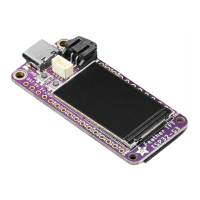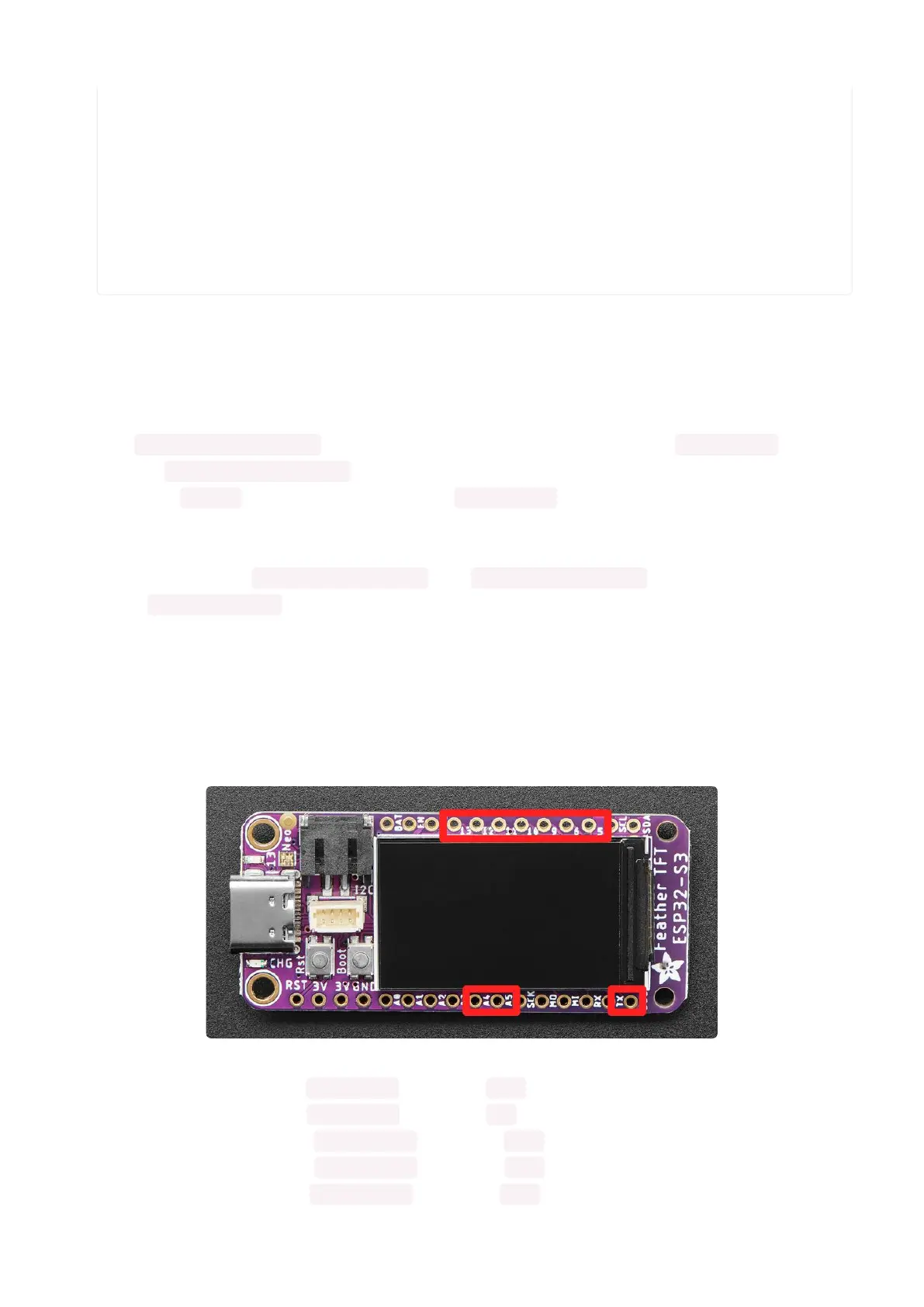import board
import touchio
touch_one = touchio.TouchIn(board.A4)
touch_two = touchio.TouchIn(board.D12)
while True:
if touch_one.value:
print("Pin one touched!")
if touch_two.value:
print("Pin two touched!")
time.sleep(0.1)
Touch the pins to see the messages printed to the serial console!
This example builds on the first. The imports remain the same.
The touchio.TouchIn() object is created, but is instead saved to touch_one . A
second touchio.TouchIn() object is also created, the second pin is provided to it
using the board module, and is saved to touch_two .
Inside the loop, we check to see if pin one and pin two are touched, and if so, print to
the serial console Pin one touched! and Pin two touched! , respectively. The
same time.sleep() is included.
If more touch-capable pins are available on your board, you can easily add them by
expanding on this example!
The Available Touch-Capable Pins
A4 - CircuitPython: board.A4 . Arduino: T14 .
A5 - CircuitPython: board.A5 . Arduino: T8 .
D13 - CircuitPython: board.D13 . Arduino: T13 .
D12 - CircuitPython: board.D12 . Arduino: T12 .
D11 - CircuitPython: board.D11 . Arduino: T11 .
•
•
•
•
•
©Adafruit Industries Page 174 of 263

